Us in the Early Days
Today – December 12, 2018 – marks four months since Barbara died. It’s nine months to the day she was first diagnosed with pancreatic cancer. It’s hard to believe. (An expression Barbara always liked was: “Time flies like an arrow. Fruit flies like a banana!”) But, I guess, if I’m really being honest, the hours mostly seem to drag, even as the days race by.
So, how’m I doing, you may wonder? Fine, I’ll tell you … because, in the big picture, I believe that’s true. But it’s been hard. It’s not so much about being sad or lonely (which, of course, I am). It’s that it’s all so strange. And so permanent. Some days are worse than others, and there’s no real rhyme or reason. (Riding alone in the car is often hard.) I’d been attributing my recent melancholy to the darker days, colder weather and the holidays, but a friend who lost his wife to cancer several years ago mentioned that after three months, the “have to” tasks have mainly been done, and you begin realize what’s changed. I suppose it’s all of those things.
But the point of this isn’t to be maudlin. It is, in fact, to make a point…
Many of you have been a tremendous help to me in ways large and small. And, of course, I can’t speak for everyone who’s experienced a loss. Still, I have noticed some things. My advice to those who may feel awkward around the bereaved would be this: don’t be afraid to talk to them. Yes, it can be hard to know what to say, but even something as simple as “we’re thinking about you,” has been nice. If that seems too general, try asking a specific question. For me, you can ask me anything. Talking about it all has been very helpful. For others, a simple question like, “What’s your favorite memory?” (although, for me, it’s hard to pick just one!) or “How did you two meet?” (or an appropriate equivalent) might be better.
And that’s my long-winded way of getting around to the story of how Barbara and I met.
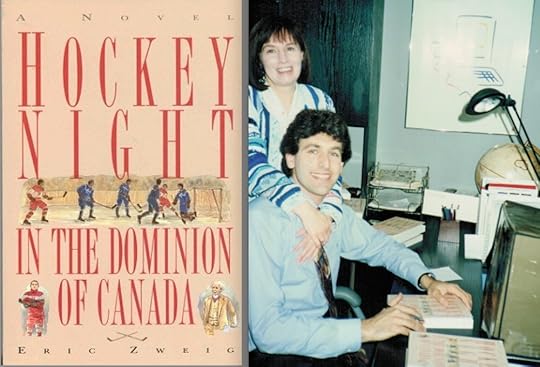
This is the first picture we have of the two of us together,
at the launch for my first book on November 1, 1992.
Many of you know the story already, but a lot don’t. I won’t go into too much detail, but we met when Barbara was hired to edit my first book, the novel “Hockey Night in the Dominion of Canada.” She was a strange choice, as to that point Barbara had only worked on non-fiction. But Barbara and Malcolm Lester, who would publish the book, had become friends over a mutual love of classic American Westerns. Something about the “men in a men’s world” aspect of my story (I would come to refer to it as an “Eastern”) made Malcolm think Barbara would be good for it. I certainly think she made the book better, yet I know she had her doubts. But we had so much fun working together! And talking together. We just clicked. Despite the many differences in our backgrounds (not to mention the 16-year age gap), we saw things the same way. Right from the beginning, we were finishing each other’s sentences. So often we seemed to know exactly what the other person was going to say even before they said it.
That never stopped. It’s what I miss the most.
I still talk to her. Sometimes. She’s yet to answer.
Anyway… as I’ve written before, it was Malcolm Lester and Lester Patrick who brought us together. Lester Patrick was the star of my story, along with other real-life hockey pioneers Frank Patrick (Lester’s brother), Newsy Lalonde and Cyclone Taylor. Barbara’s knowledge of hockey was pretty limited at the time. She was raised by two parents from Montreal, and her understanding of hockey was, “Canadiens, good. Maple Leafs, bad.” But Barbara loved history, and historic photographs, and soon she could pick out Lester Patrick in a picture from just about any period of his life.
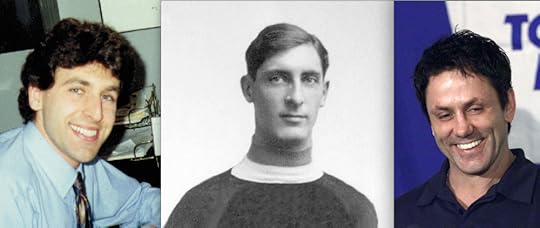
That’s me, Lester Patrick, and Doug Gilmour … all about 29 years old in these photos.
Barbara was even less of a baseball fan before I took her to her first game, but in the first two years that we were together the Blue Jays won back-to-back World Series and the Leafs reached the Conference finals in two straight seasons. She thought being a sports fan was easy. You just cheered for winning teams! So, in addition to Lester Patrick, she quickly became a big fan of Doug Gilmour. Tom Henke and Paul Molitor too.
When we were working on Hockey Night, I often brought her pictures of the players and other things I’d found in my research. Shortly after the book was launched, we went together to Ottawa and Renfrew, where most of the story takes place. The pictures that follow are among the very first ones in our first photo album together…
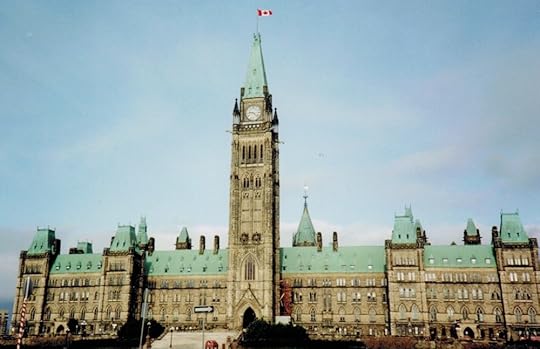
Barbara’s father was in the army and she moved A LOT in her early years.
She lived in Ottawa from ages 10 to 22 and met her first husband there.
So she’d been in the Canadian Capital many, many times…
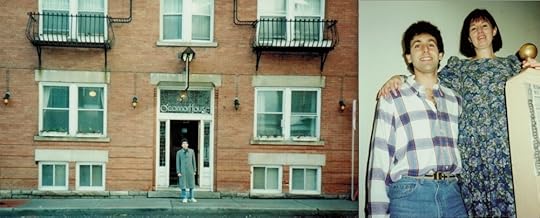
… but she hadn’t seen the places I would take her! This is the O’Connor House at Nepean
and O’Connor in downtown Ottawa. (Not sure if it’s still standing.) I was pretty certain this had originally been the boarding house where Cyclone Taylor lived when he first came to Ottawa in 1907. I stayed there when I was doing research, so we went to see it.
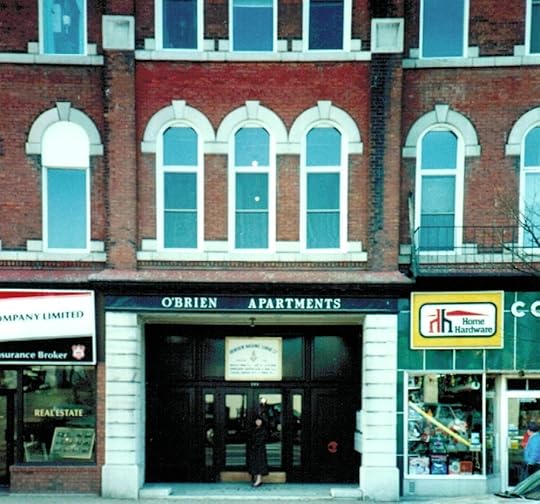
The O’Brien Apartments on the main street in Renfrew had once been the
O’Brien Opera House. (M.J. O’Brien, who financed the team with his son Ambrose,
was the true millionaire of the Renfrew Millionaires hockey team.) That’s Barbara
you can barely make out standing in front.
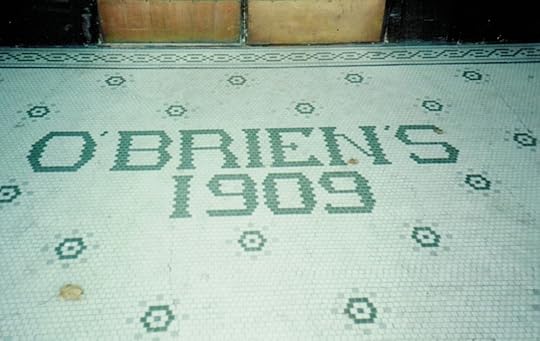
The tiles on which Barbara was standing date back to the year the Opera House opened.
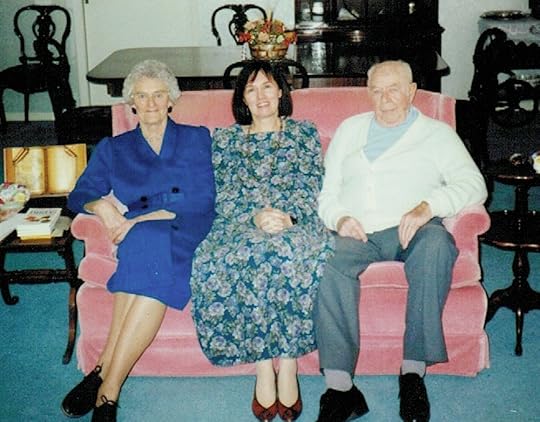
Barbara is sitting with Margaret Ritza and her husband Larry. Margaret was the granddaughter of M.J. O’Brien. Larry’s father ran a pharmacy in town and was involved with local hockey right back to the days of the Millionaires. He was pleased to see that his father had a small part in my book. The Ritzas ran a B&B in their home and they were very helpful in introducing me around Renfrew when I stayed with them on my research trips.



